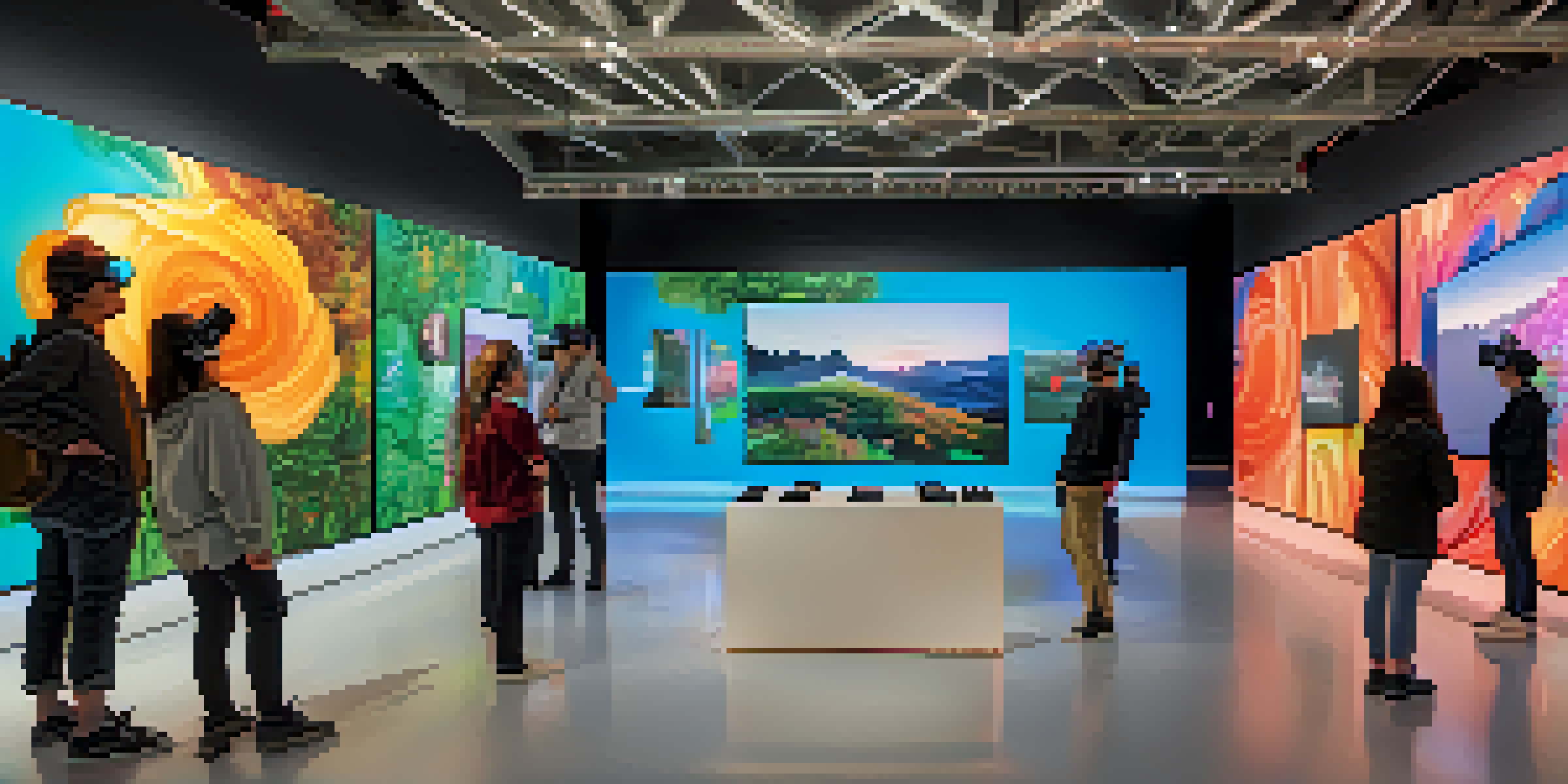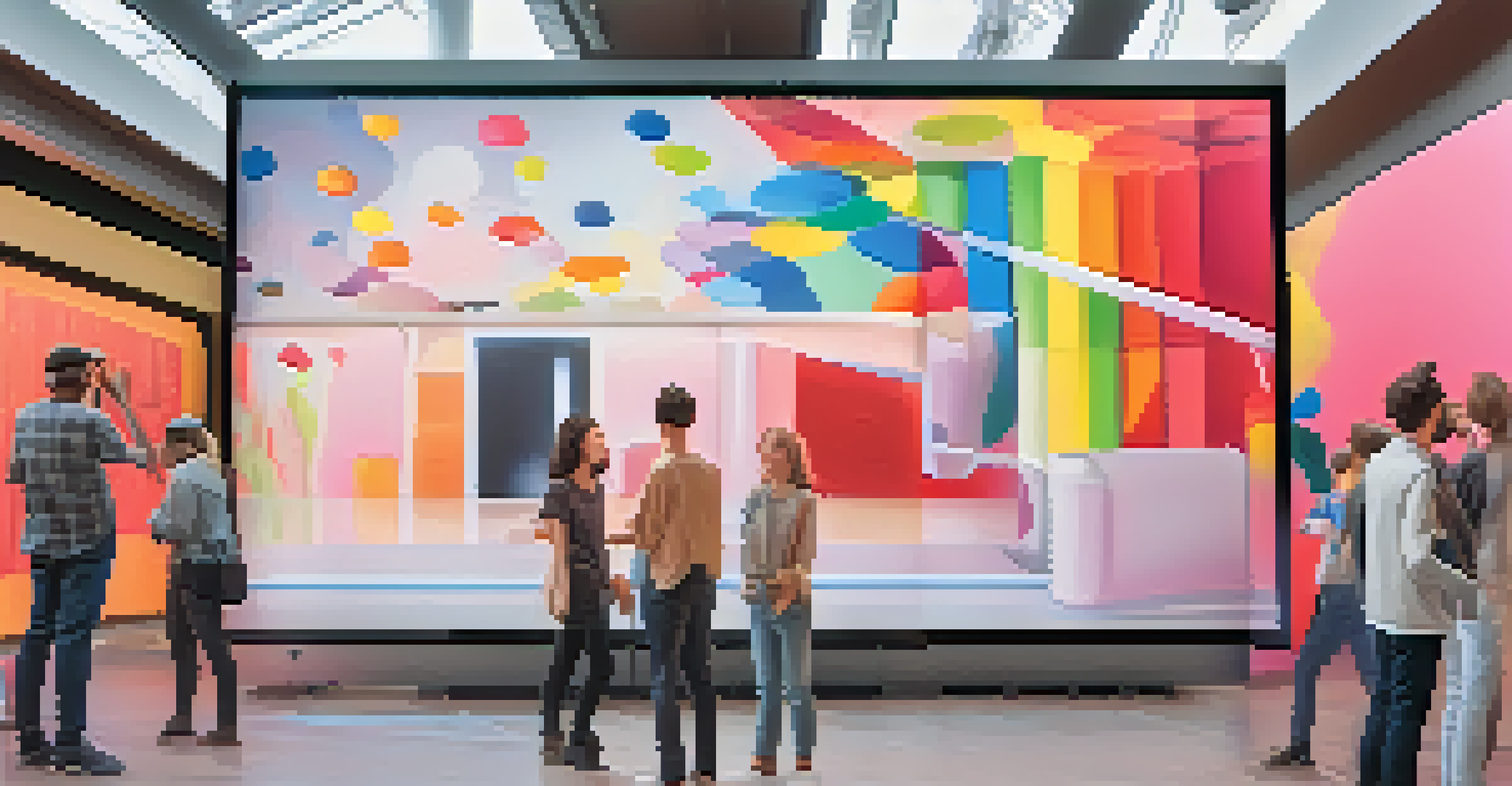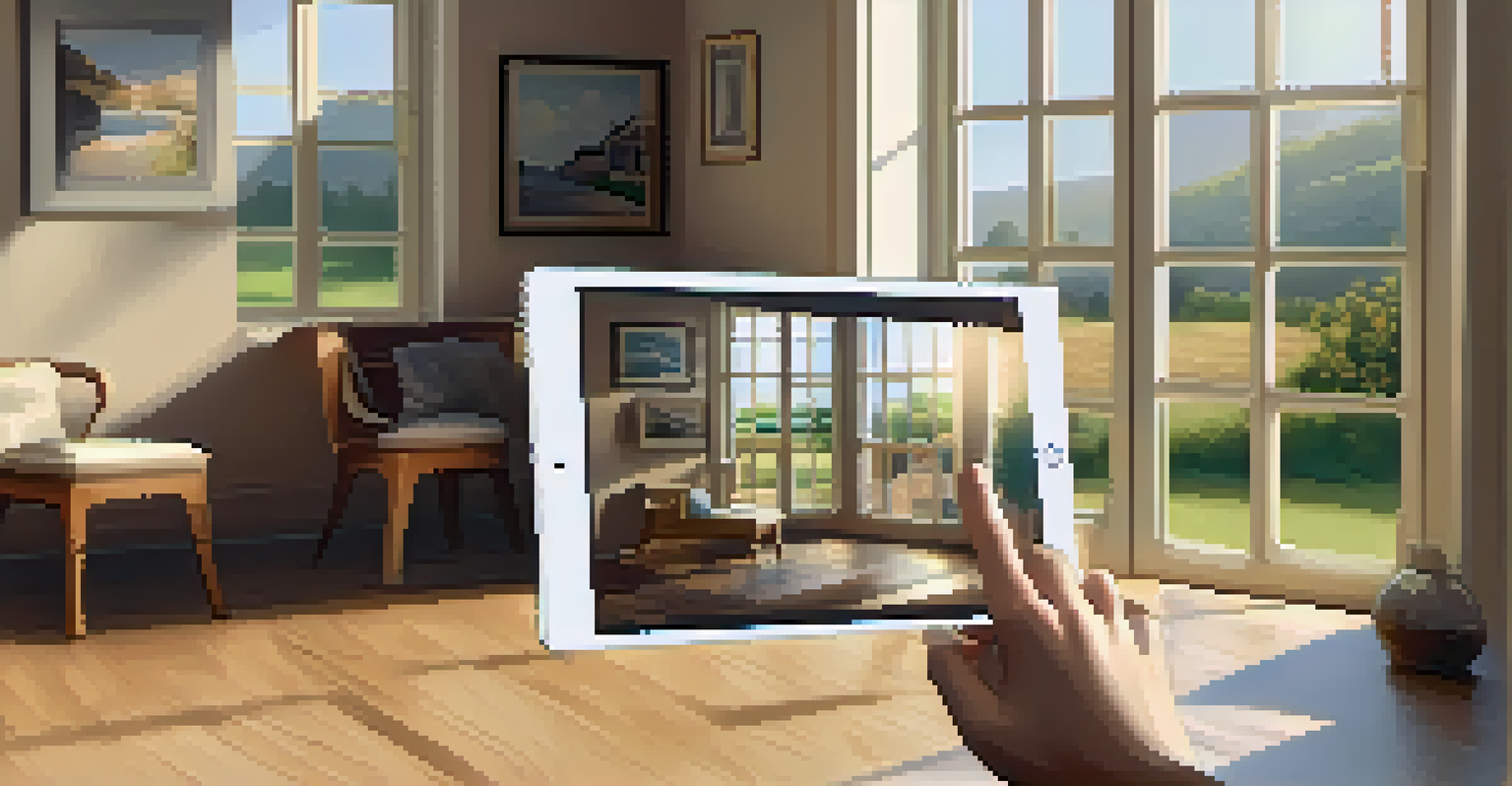Virtual Photography Exhibitions: A New Era of Viewing Art

The Rise of Virtual Photography Exhibitions
In recent years, virtual photography exhibitions have gained significant traction, especially during the pandemic. With galleries closing their doors, artists and curators turned to the digital realm to showcase their work. This shift not only allowed for continued visibility but also opened up new avenues for creativity and audience engagement.
Art is not what you see, but what you make others see.
As technology continues to advance, these virtual spaces have become more immersive and interactive. Viewers can explore exhibitions from the comfort of their homes, often using VR headsets or simply a web browser. This accessibility has made art more reachable, breaking down geographical barriers that once limited exposure to diverse artistic expressions.
Moreover, virtual exhibitions can accommodate larger audiences than traditional galleries ever could. This democratization of art viewing means that people from all walks of life can engage with photography in ways they might not have been able to before. As a result, artists are finding new ways to connect with their audience, enhancing the overall art experience.
Enhanced Accessibility and Inclusivity
One of the most significant benefits of virtual photography exhibitions is the enhanced accessibility they offer. Individuals with disabilities or mobility issues can navigate these digital spaces without the physical barriers present in traditional galleries. This inclusivity ensures that art appreciation is a right for everyone, not just a privilege for a few.

Additionally, virtual exhibitions often provide accommodations such as audio descriptions and text captions, further enriching the experience for diverse audiences. This attention to detail shows a commitment to making art accessible for all, fostering a greater appreciation for creativity across various communities.
Virtual Exhibitions Enhance Accessibility
Virtual photography exhibitions break down physical barriers, making art accessible to everyone, including individuals with disabilities.
The ease of access also extends to time and space. Viewers can explore exhibitions at their own pace, revisiting their favorite pieces without the pressure of a closing time. This flexibility invites deeper engagement and reflection, allowing art lovers to build a more personal connection with the work presented.
Innovative Presentation Formats
Virtual photography exhibitions are not just about displaying images; they also leverage innovative presentation formats. Curators can experiment with how art is showcased, using multimedia elements like video clips, audio narratives, and animated graphics to enhance storytelling. This multifaceted approach can breathe new life into traditional forms of art display.
The art of photography is all about directing the attention of the viewer.
For instance, some exhibitions incorporate interactive features that allow visitors to zoom in on details, rotate pieces, or even manipulate the artwork in real time. This level of engagement changes the way viewers interact with photography, inviting them to become active participants rather than passive observers.
Moreover, the option to host live discussions or Q&A sessions with artists during virtual exhibitions creates a dynamic platform for dialogue. This interaction not only enriches the viewing experience but also fosters a sense of community among art enthusiasts, bridging gaps that physical exhibitions might not easily achieve.
Global Reach and Exposure for Artists
Virtual photography exhibitions provide artists with a global stage, allowing their work to reach audiences far beyond their local communities. This worldwide exposure can significantly impact an artist's career, leading to new opportunities, collaborations, and even sales. The digital platform effectively levels the playing field for emerging artists who may not have had the chance to showcase their work otherwise.
By participating in virtual exhibitions, artists can connect with collectors and enthusiasts from various corners of the globe. This connection not only broadens their audience but also fosters cross-cultural exchanges that can inspire new ideas and artistic directions. It’s a win-win for both artists and viewers, creating an enriching environment filled with diverse perspectives.
Global Reach Benefits Artists
These exhibitions offer artists a platform to connect with a worldwide audience, leading to new opportunities and cultural exchanges.
Furthermore, many online platforms offer analytics tools that help artists understand their audience better. By tracking engagement and interactions, artists can tailor their future works and exhibitions to meet viewer preferences, creating a more personalized experience that resonates with their audience.
The Role of Technology in Art Appreciation
Technology plays a pivotal role in the evolution of virtual photography exhibitions. From high-resolution images to 360-degree virtual tours, advancements in tech have transformed how we experience art. This innovation not only enhances visual quality but also allows for more engaging interactions, making art appreciation a truly immersive experience.
Augmented reality (AR) and virtual reality (VR) are at the forefront of this technological evolution, providing unique ways to experience photography. Imagine stepping into a virtual gallery where you can walk around and interact with the artwork as if you were there in person. Such experiences elevate the traditional art-viewing experience into a new dimension.
Moreover, the integration of AI and machine learning is also making waves in the art world. These technologies can analyze viewer preferences and curate personalized exhibition suggestions, tailoring the experience to individual tastes. This level of customization is not only convenient but also deepens the connection between the viewer and the artwork.
Challenges of Virtual Exhibitions
Despite the numerous benefits, virtual photography exhibitions are not without their challenges. One major concern is the lack of physical presence, which can diminish the emotional impact that comes from viewing art up close. The tactile experience of standing before a piece of art and feeling its presence is something that digital mediums struggle to replicate.
Additionally, the digital divide remains a significant barrier. Not everyone has access to high-speed internet or the latest technology, which can exclude certain demographics from fully participating in virtual exhibitions. This issue raises questions about equity and accessibility in the ever-evolving art landscape.
Technology Transforms Art Experience
Advancements in technology, like VR and AR, are revolutionizing how we interact with art, creating immersive and engaging experiences.
Finally, there’s the challenge of oversaturation. With so many virtual exhibitions available, it can be difficult for any single exhibition to stand out. Artists and curators must continually innovate and find unique ways to capture attention in a crowded digital space, ensuring that their work remains compelling and relevant.
The Future of Art Viewing
As we look ahead, it’s clear that virtual photography exhibitions are here to stay. While traditional galleries will always have their place in the art world, the digital landscape is expanding and evolving in exciting ways. This hybrid approach to art viewing could become the norm, blending the best of both worlds to create richer experiences for audiences.
The potential for collaboration between artists and technologists is vast, leading to innovations we can only begin to imagine. This partnership could pave the way for entirely new forms of artistic expression that challenge our understanding of photography and art as a whole.

Ultimately, the future of art viewing will likely embrace a more inclusive and diverse approach, ensuring that everyone has the opportunity to engage with creativity. As we navigate this new era, it’s essential to recognize the importance of both virtual and physical spaces, learning to appreciate the unique benefits each brings to the table.